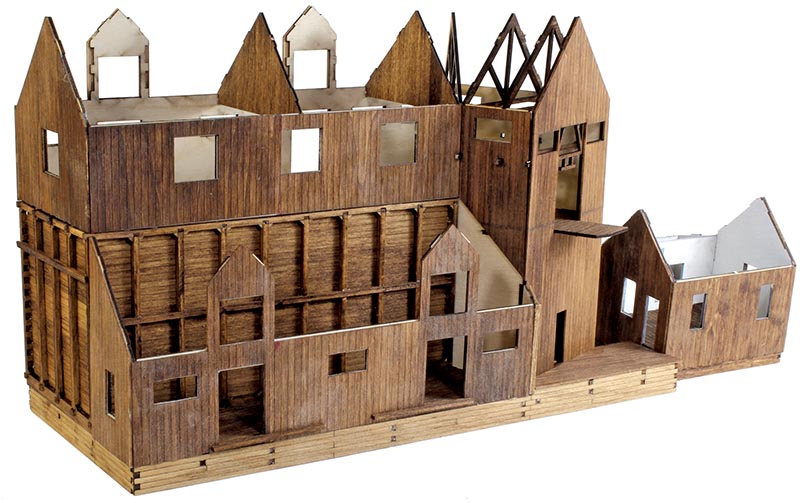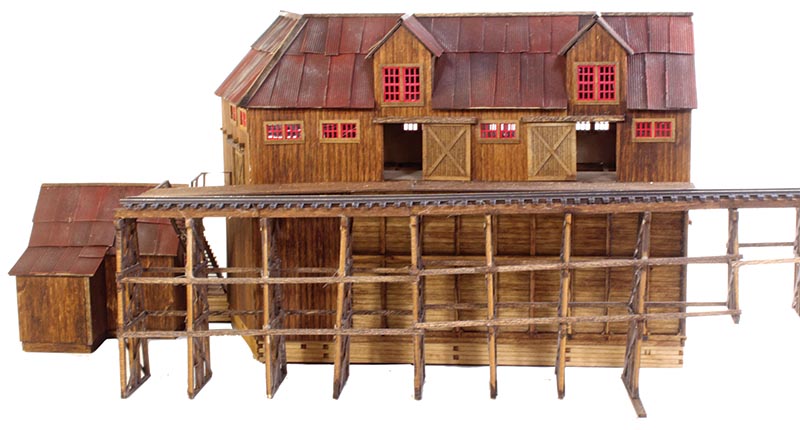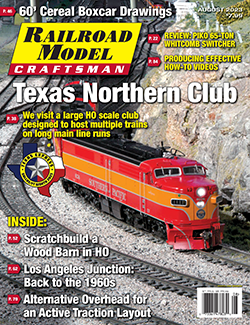 Review by George Riley/photos by the author
Review by George Riley/photos by the author
While not often modeled, aerial trams used in the mining industry proved to be a critical component of mining in rugged, mountainous regions. These trams were commonly used in the Colorado mining districts. One of the more comprehensive systems was used on Edward Stoiber’s associated mines located above the Silver Lake Basin in San Juan County, Colorado.
The Iowa mine incorporated its own milling operation from which processed ore was sent down by aerial tram to a tram terminal located downgrade next to the tracks of the Silverton Northern Railroad. The Royal Tiger mine, another of Stoiber’s properties, used an aerial tram line to move raw ore to the Iowa mine’s mill for initial processing before the finished ore was in turn transported to the tram terminal. At the tram terminal, the ores from several mines were consolidated, assayed, and then bagged. The bags were loaded into railroad boxcars and then shipped to smelters in the Silverton area.
Built in 1899, the first Iowa-Royal Tiger Tram Terminal is the focus of this kit from Berkshire Valley Models. The prototype only served a short time since it burned down in 1906 and was quickly replaced by a new building. Gold and silver mining around Silver Lake would taper off and gradually end in the late 1930s, leaving only the scattered ruins of a once-impressive industry.

Here we see the kit partially assembled.
The tram house kit builds into one of those impressive structures worthy of being the centerpiece of a model railroad layout. The structure is constructed around the central ore bin from a laser-cut core with pre-stained, scribed precut basswood sheeting. The fit of all of these components is precise, making assembly simple and straightforward. Laser-cut windows, doors, stair stringers, treads, and trim finish off the building’s carcass with stripwood applied for the various railings and ancillary details. While appearing complex, a comprehensive set of included instructions makes assembly easy, albeit time-consuming, taking a little over twenty hours to complete.
Corrugated, embossed card sheets are provided to cover the roof to replicate commonly used corrugated iron panels. These strips were first cut to width and then painted and weathered prior to installing with polyvinyl acetate (PVA) adhesive, like Aleene’s Tacky Glue. These panels were first given a coat of oxide red primer followed while still wet with a misting of flat earth brown camouflage paint. Once the glue had dried, the roof was given an overall dry brush of light tan craft paint, giving the finished roof a well-weathered appearance. Stripwood was used for the caps and valley trim to complete the roof…




